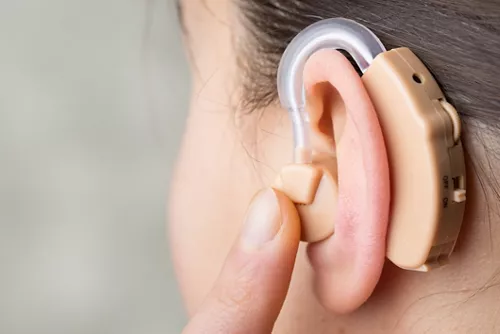
Hearing aids are small electronic devices designed to amplify sound for individuals with hearing loss, making speech and other sounds easier to hear. They don’t cure hearing loss but significantly improve communication, awareness, and quality of life.
How Hearing Aids Work
A hearing aid has three main parts:
- Microphone – picks up sound from the environment.
- Amplifier – makes the sound louder.
- Speaker (receiver) – sends the amplified sound into the ear.
Digital hearing aids also process sound intelligently, reducing background noise and enhancing speech.
👂 Types of Hearing Aids
- Behind-the-Ear (BTE)
- Sits behind the ear; a tube directs sound into an earpiece.
- Suitable for all ages and most levels of hearing loss.
- Durable and powerful.
- Receiver-in-Canal (RIC) or Receiver-in-the-Ear (RITE)
- Similar to BTE but smaller with the speaker inside the ear canal.
- More natural sound and discreet.
- In-the-Ear (ITE)
- Custom-made to fill the outer ear.
- Easier to handle but more visible.
- In-the-Canal (ITC) and Completely-in-Canal (CIC)
- Very small and fit inside the ear canal.
- More discreet but may be harder to adjust and handle.
- Best for mild to moderate hearing loss.
- Invisible-in-Canal (IIC)
- Deeply inserted, virtually invisible.
- Minimal features, suitable for specific hearing loss profiles.
🧠 Features of Modern Hearing Aids
- Directional microphones – improve hearing in noisy environments
- Noise reduction – filters out background sounds
- Bluetooth connectivity – connect to phones, TVs, and more
- Rechargeable batteries – no more swapping batteries
- Smartphone apps – control settings, track hearing health
- Telecoil (T-coil) – for better hearing in loop-enabled spaces (like theaters or churches)
🩺 Who Needs a Hearing Aid?
- People with sensorineural hearing loss (caused by inner ear damage).
- Anyone with hearing difficulty affecting daily communication.
- Audiologist testing confirms hearing thresholds and type of loss.

